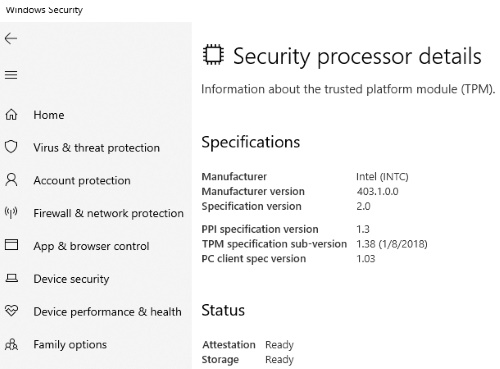RSA is a public-key encryption system designed by Ron Rivest, Adi Shamir and Leonard Adleman. It uses a set of keys, EK (Endorsement Key), SRK (Storage Root Key) and AIK (Attestation Identity Key), that protect a device against unauthorized firmware and software modifications. A TPM (Trusted Platform Module) is a chip on a computer board that securely stores the RSA encryption keys.
One of the requirements for Windows 11 is TPM version 2.0. If you have Windows 10 (the only version of that can be upgraded to Windows 11), and you have TPM version 2.0 module, and it's enabled, then (if all other system requirements are met) you can install and run Windows 11. Here is how to determine if you have TPM version 2.0:
In the Start menu, select Settings (the gear icon). In Windows Settings, scroll down to and click on Update & Security. In the Update & Security window, click on the Windows Security shield icon. In the Protection areas list that appears, select Device Security.

Under Device Security, Security Processor should be listed. If Security Processor is listed, select it to verify the specification version and if it is activated.
More Windows Administration Information:
• Find Your WiFi Password on Windows 10
• Font Basics
• The Different Types of Virtualization
• Command Line to Get Computers Model, Vendor, and Serial Number
• A Day in the Life of a System Administrator
• Configure Windows 10 to Search Windows Only
• How to Harden a Server
• Disable Kernal Paging to Speed Up Windows
• How to Become a Microsoft MVP (Most Valuable Professional)
• How to Setup DHCP (Dynamic Host Configuration Protocol) on a Windows Server

